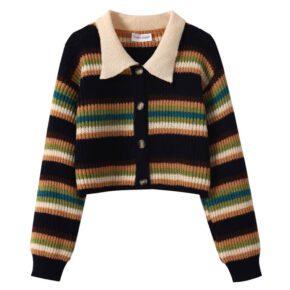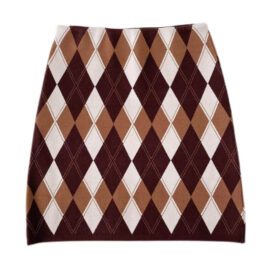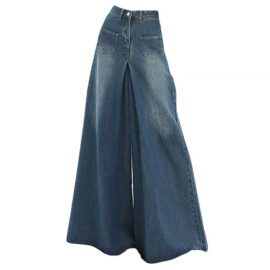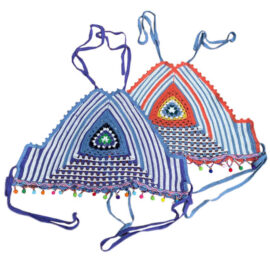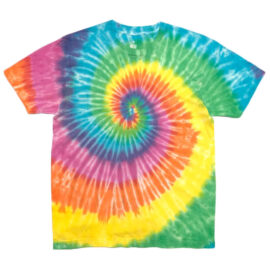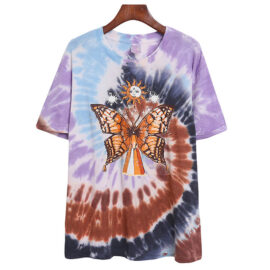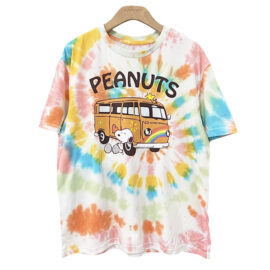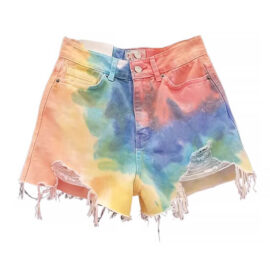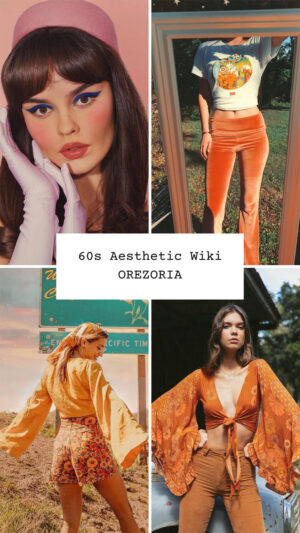
The 60s aesthetic is a defining era in fashion and popular culture, characterized by its bold and vibrant style. This aesthetic emerged in the late 1960s and was heavily influenced by cultural shifts and youth movements of the time. It rejected the conservative styles of the past and embraced a more progressive and youthful approach.
One of the key elements of the 60s aesthetic was the use of bold patterns and bright colors. Fashion designers such as Mary Quant and Paco Rabanne introduced futuristic and modern designs featuring geometric patterns and psychedelic prints. The mini skirt became a popular choice among women, symbolizing the liberation and empowerment of females in society.
The 60s aesthetic had a significant impact on both fashion and popular culture. It challenged traditional norms and allowed individuals to express their personal style in a more daring and avant-garde manner. Fashion icons like Jackie Kennedy, Jane Birkin, and Brigitte Bardot became influential figures, inspiring people to experiment with their clothing choices.
Overall, the 60s aesthetic was a cultural revolution that brought forth a new wave of fashion and self-expression. Its bold patterns, bright colors, and futuristic shapes continue to inspire designers and shape the fashion industry today. Whether it’s the iconic mini skirt or the psychedelic prints, the 60s aesthetic remains a symbol of cool style and timeless fashion.
Related aesthetics: 70s, Artsy, Avant Basic, Boho, Bookstore Girl, Celestial, Coconut Girl, Fairycore, Grandmacore, Granola Girl, Indie, Psychedelic, Rave, Retro, Thriftcore, Vintage
Full List of Aesthetics
The Rise of the 60s Aesthetic
In the late 1960s, the fashion industry witnessed a significant shift in style and attitude, giving rise to the iconic 60s aesthetic. This era was characterized by bold patterns, bright colors, and futuristic designs that broke away from conservative styles of the past. Fashion designers like Mary Quant and Paco Rabanne paved the way with their avant-garde creations, introducing daring and innovative designs that captured the essence of the youth culture.
The mini skirt emerged as a symbol of female liberation, challenging societal norms and empowering women to express themselves through their fashion choices. This era also saw the rise of fashion icons such as Jackie Kennedy, Jane Birkin, and Brigitte Bardot, whose influential and iconic fashion statements inspired a generation to embrace the boldness and vibrancy of the 60s aesthetic. The 60s aesthetic not only left a lasting impact on fashion, but it also became a cultural movement that reflected the changing times and attitudes of the era.
Social and Cultural Changes
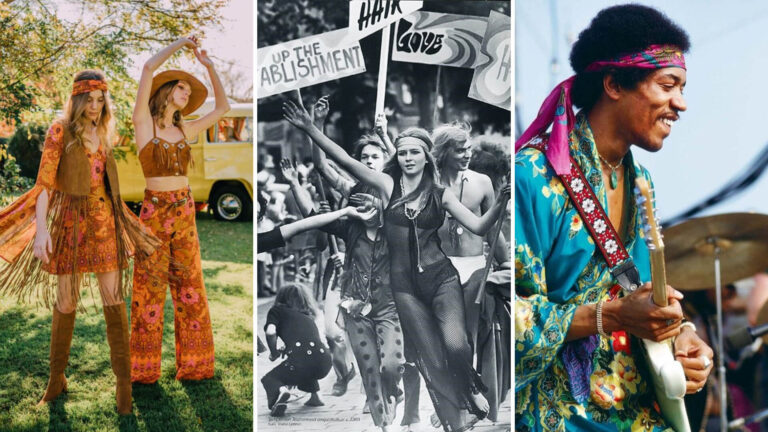
During the 1960s, the world experienced significant social and cultural changes that had a profound impact on fashion and personal style. One of the most notable shifts was the rise of the counterculture movement, which challenged societal norms and embraced a new sense of freedom and individuality. This movement gave birth to the Hippie Boho Chic style, characterized by flowing fabrics, bold patterns, and a relaxed, natural aesthetic.
The counterculture movement rejected the conservative styles of the past and embraced a more eclectic, bohemian look that celebrated self-expression and non-conformity. This style was heavily influenced by the Beatnik Style of the 1950s, which favored black turtlenecks, berets, and a minimalist approach to fashion.
The 60s also saw the mainstreaming of futuristic and modern designs, popularized by fashion icons such as Mary Quant and Jackie Kennedy. Mini skirts, bold colors, and geometric patterns became the fashion statement for women, reflecting the cultural shifts towards youth culture and a more liberated attitude.
Additionally, the cultural shifts of the 60s were reflected in popular culture, with icons like Jane Birkin, Brigitte Bardot, and the Beatles influencing fashion trends with their bold prints, flared skirts, and mop-top hairstyles. Designers like Paco Rabanne embraced futuristic shapes and psychedelic prints, making them a popular choice among the fashion-forward youth.
1960s Aesthetic Fashion and Outfits Guide
The 1960s was a decade of immense cultural shifts, and fashion played a significant role in capturing the dynamic spirit of the era. This style guide explores the iconic trends, influential fashion icons, and key elements of the 60s aesthetic. From the rise of mini skirts to the embrace of bold prints and futuristic designs, the fashion industry went through a remarkable transformation during this time, reflecting the changing attitudes and values of society. Join us on a journey through the vibrant and revolutionary world of 1960s fashion.
60s Aesthetic Clothing
The 60s aesthetic is renowned for its bold and vibrant clothing styles that epitomized a cultural shift towards youth and rebellion. This era saw the emergence of fashion icons like Mary Quant and Jackie Kennedy, who influenced the fashion industry with their personal style choices. The 60s embraced bold patterns, bright colors, and futuristic designs, revolutionizing the way people dressed.
One of the most iconic fashion pieces of the 60s was the mini skirt. This daring and revolutionary garment challenged conservative styles, allowing women to showcase their individuality and embrace their femininity. Alongside mini skirts, bell-bottom jeans gained popularity for their wide-legged, flare style that encapsulated the free-spirited and carefree nature of the era.
The 60s also saw the rise of psychedelic prints and tie-dye t-shirts with vibrant and hypnotic patterns becoming a popular choice among fashion-forward individuals. These bold prints were often seen on dresses, blouses, and accessories, adding a touch of whimsy and playfulness to outfits.
The fashion industry in the 60s embraced the futuristic designs of designers like Paco Rabanne, pushing the boundaries of traditional fashion. Their innovative use of unconventional materials and futuristic shapes created a dichotomy between the past and the future, giving rise to unique and modern designs.
The 60s aesthetic was a true representation of the evolving cultural landscape, with fashion playing a crucial role in expressing individuality and embracing the spirit of youth culture. The use of bold patterns, bright colors, and futuristic designs made the 60s an iconic era in the history of fashion.
You can find more 60s clothing and accessories in our 60s Outfits Collection.
Try our new Aesthetic Outfits AI to Try-on Clothes.
60s Aesthetic Accessories
During the 1960s, the world of fashion accessories underwent a significant transformation as the decade embraced the bold and innovative spirit of the era. This shift was particularly noticeable in the realm of jewelry trends. Gone were the days of glamorous gold and feminine pearls; instead, the 60s saw the rise of bold plastic creations inspired by the pop art movement.
Influenced by the vibrant colors and unconventional designs of pop art, jewelry designers embraced striking creations that featured geometric shapes and bright colors. Plastic became a popular material choice, allowing for the creation of eye-catching accessories that perfectly captured the spirit of the times.
Key accessories of the 60s included large earrings that adorned the ears with their oversized and geometric designs. Big rings with bold and intricate patterns became a popular choice, adding a touch of statement-making style to any outfit. Bangles in various colors and widths were stacked on wrists, creating a playful and youthful look.
Handcrafted beaded pieces also found their place in 60s fashion, with necklaces and bracelets featuring intricate beadwork and vibrant colors. On the symbolic front, the peace symbol necklace became an iconic accessory, reflecting the era’s association with peace, love, and freedom.
60s Aesthetic Hairstyles
The 1960s was a decade marked by social and cultural change, and this was reflected in the hairstyles of the time. One of the most iconic and distinctive hairstyles of the era was the beehive. This towering hairstyle, popularized by women like Jackie Kennedy, featured voluminous teased hair piled high on the head, creating a dramatic and sophisticated look.
Another popular hairstyle was the bouffant, characterized by its big, poofy look with lots of volume and height at the crown. This style was often achieved using backcombing and hair spray, giving women a glamorous and polished appearance.
Perhaps the most famous haircut of the 60s was the “Twiggy” haircut, named after the British model and fashion icon. This short and mod hairstyle featured a cropped pixie cut with a sleek, boyish look. It became a symbol of the youth culture and rebellion against the conservative styles of the previous decade.
These hairstyles reflected the social and cultural changes of the era, as women embraced a sense of freedom and individuality. The beehive and bouffant represented the importance of grooming and maintaining an immaculate appearance, while the Twiggy haircut challenged traditional gender norms and embraced a more androgynous aesthetic.
60s Aesthetic Makeup
In the 1960s, makeup trends reflected the bold and revolutionary spirit of the era. The 60s aesthetic embraced a distinct look characterized by big eyes, pale lips, and matte complexions.
One of the most iconic elements of 60s makeup was the emphasis on eyes. Thick, winged eyeliner became a popular choice, creating a dramatic and defined look that framed the eyes. Long, spidery lashes were also a staple of the era, achieved with the use of false lashes or heavy mascara application.
Cool-toned eyeshadows in shades of blue, green, and silver were frequently used to enhance the eyes. Another popular technique was the cut crease, which involved using contrasting eyeshadow shades to create a defined crease line.
To balance the focus on the eyes, the rest of the face was kept relatively understated. Pale matte foundations were used to achieve a smooth and flawless complexion. Natural groomed brows were preferred, accentuating the eyes without overpowering them. Nude lips, often achieved with pale pink or peachy shades, completed the overall 60s makeup look.
These makeup trends of the 60s epitomized the fashion-forward and rebellious spirit of the decade. The emphasis on big eyes, pale lips, and matte complexions created a striking and avant-garde aesthetic that continues to influence beauty trends today.
Tips on How to Dress 60s Style
If you want to embrace the 60s aesthetic in your wardrobe, here are some key tips and guidelines to help you achieve the look:
- Embrace Bold Patterns: The 60s were known for their bold and eye-catching patterns. Incorporate graphic prints, geometric designs, and psychedelic patterns into your outfits to capture the essence of the era.
- Play with Bright Colors: The use of vibrant, bold colors was a defining characteristic of 60s fashion. Experiment with hues like electric blue, hot pink, sunny yellow, and lime green to make a statement and add a touch of nostalgia to your look.
- Don Mini Skirts: The introduction of the mini skirt in the 60s revolutionized fashion. Embrace this iconic piece by pairing it with a fitted top and platform heels for a mod-inspired outfit. Opt for bold colors or patterns to make a real fashion statement.
- Embrace the Mod Aesthetic: The mod subculture heavily influenced fashion in the 60s. Emphasize clean lines, simple silhouettes, and structured cuts in your outfits. Look for shift dresses, A-line skirts, and tailored suits to capture the mod aesthetic.
- Accessorize with Statement Pieces: Complete your 60s look with statement accessories. Chunky statement jewelry, oversized sunglasses, and wide-brimmed hats were all popular choices during this era. Don’t be afraid to go big and make a statement with your accessories.
By incorporating bold patterns, bright colors, mini skirts, and embracing the mod aesthetic, you can capture the essence of 60s style and add a touch of nostalgia to your wardrobe. Experiment with different silhouettes and have fun creating your own unique, retro-inspired looks.
60s Men's Fashion
In the 1960s, men’s fashion experienced a dramatic shift, embracing new styles and breaking away from traditional norms. One key element of 60s men’s fashion was the popularity of Nehru jackets. These collarless jackets, inspired by Indian fashion and named after Indian Prime Minister Jawaharlal Nehru, became a symbol of 60s modernity. Nehru jackets featured a streamlined silhouette, buttoned fronts, and were often made from luxurious fabrics like velvet or brocade.
Another influential factor in 60s men’s fashion was the style of The Beatles. This British rock band had a significant impact on fashion trends, with their iconic mop-top hairstyles and tailored suits. They popularized slim-fitting suits with narrow lapels, crisp shirts, and slim ties. Their style conveyed a sense of youthfulness, rebellion, and trendy sophistication.
The 60s also saw the introduction of flared jeans, which quickly became a staple in men’s fashion. These bell-bottoms featured a tight fit through the thighs and flared out dramatically towards the ankles. They were often paired with colorful patterned shirts and represented the free-spirited and laid-back nature of the era.
These styles had a profound impact on mainstream fashion, shaping the cultural significance of 60s men’s fashion. The Nehru jacket symbolized an embrace of global influences, breaking away from conservative styles. The Beatles’ fashion choices revolutionized men’s suits, introducing a more youthful and playful aesthetic. Flared jeans challenged the conventional masculine silhouette and became associated with the counterculture movement.
Mary Quant and Mini Skirts
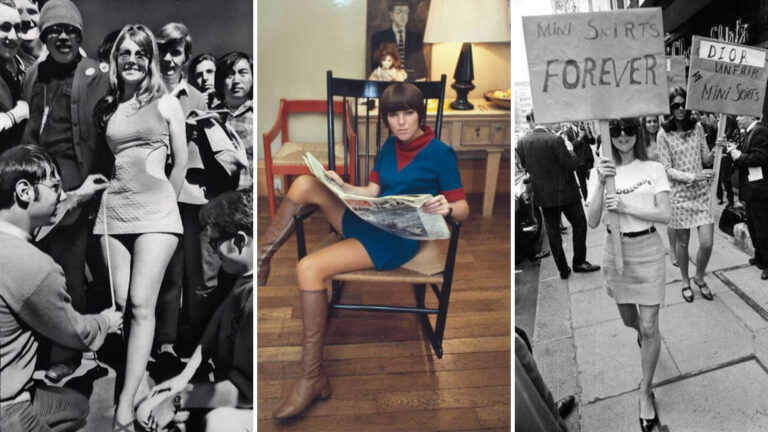
One of the key figures in defining the 60s aesthetic was British fashion designer Mary Quant. Her impact on the fashion industry cannot be overstated, as she revolutionized women’s fashion with her daring and innovative designs. Mary Quant is credited with popularizing the iconic mini skirt, a garment that became a symbol of liberation and women’s empowerment during the 1960s.
The mini skirt, which was considerably shorter than the conventional hemlines of the time, showcased women’s legs and challenged societal norms. Mary Quant’s bold and futuristic designs, which often featured bright colors and bold patterns, captured the spirit of the youth culture and reflected the cultural shifts of the era. Her contribution to 60s fashion trends played a significant role in shaping the iconic fashion statements of the time.
The Revolution of the Mini Skirt
The revolution of the mini skirt in the 1960s was a pivotal moment that redefined fashion and broke traditional norms. This fashion trend, pioneered by influential designers like Mary Quant and Paco Rabanne, made a bold statement with its daring, above-the-knee length.
The mini skirt was a symbol of liberation and self-expression, defying conservative styles and embracing a youthful and modern look. It became synonymous with the mod subculture, characterized by its clean lines, bold patterns, and bright colors. This iconic garment empowered women to embrace their personal style and showcased their confidence and individuality.
Beyond the mod style, the mini skirt also influenced other fashion movements of the era. The beatnik look, inspired by the Beat Generation of writers and poets, adopted the mini skirt as a way to challenge societal norms and express rebelliousness. The hippie style, rooted in youth culture and countercultural movements, embraced flowing, bohemian-inspired mini skirts as a rejection of mainstream fashion and a celebration of freedom and peace.
The revolution of the mini skirt exemplified the cultural shifts of the 1960s. It not only shaped the fashion industry but also became a powerful symbol of youth, freedom, and self-expression. Today, the impact of the mini skirt revolution can still be seen in contemporary fashion, as it continues to be a popular choice and a timeless fashion statement.
Bold Patterns and Bright Colors of the 1960s
The fashion industry in the late 1960s saw a significant departure from conservative styles, as bold patterns and bright colors took center stage. Designers like Mary Quant and Paco Rabanne embraced this shift, incorporating vibrant prints and eye-catching hues into their designs. Fashion became a form of personal expression, with individuals embracing psychedelic prints, geometric patterns, and bold color combinations.
The youth culture of the time gravitated towards these daring fashion choices, using clothing as a means of rebellion and self-identity. The popularity of mini-skirts and flared trousers further accentuated the bold patterns and bright colors of the era, as fashion for women became a powerful tool for individuals to push boundaries and challenge societal norms. These vibrant and avant-garde designs reflected the cultural shifts and futuristic shapes of the 1960s, making it an iconic period in 20th-century fashion.
Psychedelic Prints and Flared Skirts
Psychedelic prints, Tie-Dye T-Shirts, and flared skirts were prominent fashion trends that emerged in the late 1960s, embodying the youthful energy and optimism of the era. These trends embraced bold colors, swirling shapes, and vibrant patterns, making a powerful fashion statement.
Psychedelic prints were characterized by their trippy and mind-altering designs, often inspired by the psychedelic art movement. These intricate patterns incorporated swirls, spirals, and abstract shapes, creating an optical illusion effect. Flared skirts, on the other hand, featured an A-line silhouette that flared out from the waist, adding movement and flair to outfits.
The popularity of psychedelic prints and flared skirts can be attributed to the cultural shifts happening during the 1960s. The youth culture was seeking liberation from conservative styles and looking for ways to express their individuality. These trends reflected the rebellious and experimental nature of the time, challenging traditional fashion norms.
Artists like Bridget Riley and Victor Vasarely played a significant role in influencing these designs. Their abstract and geometric artworks inspired fashion designers to incorporate similar elements into their garments, resulting in the creation of vibrant, dizzying patterns on fabrics.
Psychedelic prints and flared skirts became a symbol of freedom, self-expression, and the counterculture movement of the 1960s. They continue to inspire modern fashion with their bold and statement-making style, reminding us of the colorful and progressive spirit of the era.
Paco Rabanne's Futuristic Designs
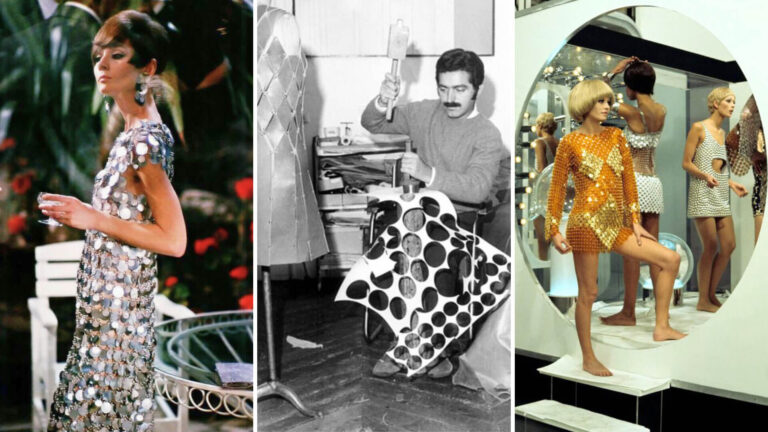
Paco Rabanne’s futuristic designs were groundbreaking and had a significant impact on the 60s aesthetic. Known for his avant-garde approach to fashion, Rabanne pushed the boundaries of traditional design with his innovative use of unconventional materials such as metal and plastic.
By incorporating these materials into his garments, Rabanne revolutionized the fashion industry. His creations challenged the notion that clothing had to be made solely from fabric, opening up a new realm of possibilities. The use of metal and plastic not only gave his designs a futuristic and modern look but also allowed for the creation of unique silhouettes and structures.
One of Rabanne’s most iconic collections was the “12 Unwearable Dresses in Contemporary Materials.” This collection showcased his bold and inventive designs, featuring dresses made entirely from industrial materials like discs, metal rings, and plastic. These garments were unlike anything seen before, defying traditional notions of dressmaking.
Rabanne’s innovative designs and use of unconventional materials influenced the future of fashion. His creations inspired other designers to experiment with new materials and techniques, paving the way for modern and progressive designs. Today, his legacy can be seen in the work of contemporary designers who continue to push the boundaries of what is possible in the world of fashion.
Brigitte Bardot's Role in 60s Fashion Trends
Brigitte Bardot played a significant role in shaping the 60s fashion trends and was one of the iconic fashion figures of the era. With her effortless beauty and alluring style, she became a symbol of youth culture and rebellion, influencing the aesthetic of the time.
Bardot’s fashion choices were bold and daring, often challenging the traditional notions of femininity. She popularized the now-iconic look of tousled hair, smoky eyes, and a sultry pout, defining the concept of “French cool” that continues to inspire fashion today.
Her wardrobe featured a mix of feminine and masculine elements, incorporating elements like flared skirts, mini-skirts, and bold prints. Bardot’s self-expression through fashion showcased a free-spirited and confident attitude, embodying the essence of the 60s youth culture.
Her influence extended beyond her personal style, as women around the world sought to emulate her effortless and sensual allure. Bardot’s bold fashion choices and unique sense of style undoubtedly left an indelible mark on the fashion landscape of the 60s, shaping the aesthetic of the era and cementing her status as an iconic fashion figure.
Jane Birkin, the It Girl of the 60s
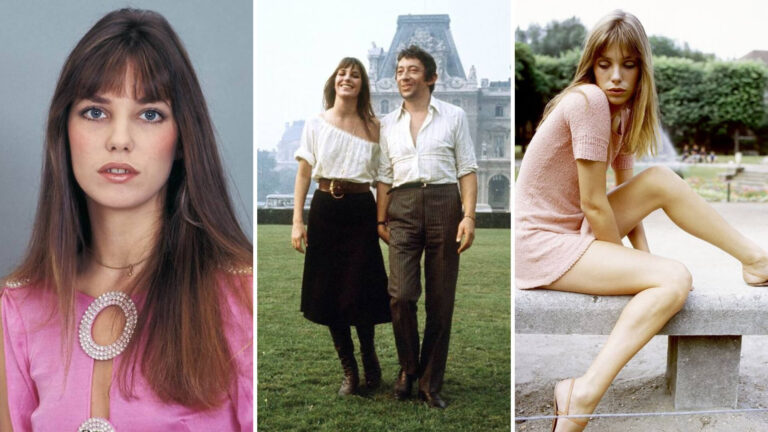
Jane Birkin, the epitome of chic and effortless style, was the ultimate It Girl of the 60s. With her bohemian charm and undeniable charisma, Birkin became a trailblazer in the world of fashion, leaving an indelible mark on the era’s iconic trends.
Her influence on 60s fashion was undeniable. Birkin popularized the “less is more” approach, advocating for minimalistic and unpretentious looks. Her personal style resonated with countless individuals, inspiring them to embrace simplicity and authenticity.
Birkin’s affinity for incorporating menswear into her wardrobe helped redefine femininity in the fashion world. She often paired oversized shirts with mini skirts, creating a juxtaposition of masculine and feminine elements that challenged conventional norms. Her nonchalant and effortless appearances effortlessly captivated the fashion industry, solidifying her status as a trendsetter.
One of Birkin’s most significant contributions to 60s fashion was her love for the iconic Birkin basket bag, which became a must-have accessory and a symbol of timeless elegance. This seemingly small addition to her outfits sparked a global trend and has remained a coveted fashion staple to this day.
Jane Birkin’s enduring influence as an It Girl of the 60s continues to resonate in the fashion industry. Her timeless style, defined by its simplicity and natural beauty, has inspired countless individuals and cemented her status as an iconic fashion figure.
Impact of Youth Culture on the Fashion Industry
The influence of youth culture on the fashion industry during the 60s cannot be understated. Young people sought to express themselves through their personal style, rejecting traditional forms of dress and embracing more daring and unconventional looks. This shift in attitude opened up new opportunities for designers and allowed for a greater level of experimentation in fashion. Designers like Mary Quant and Paco Rabanne rose to prominence during this time, with their futuristic and modern designs captivating the younger generation.
Rise of the Hippie Style
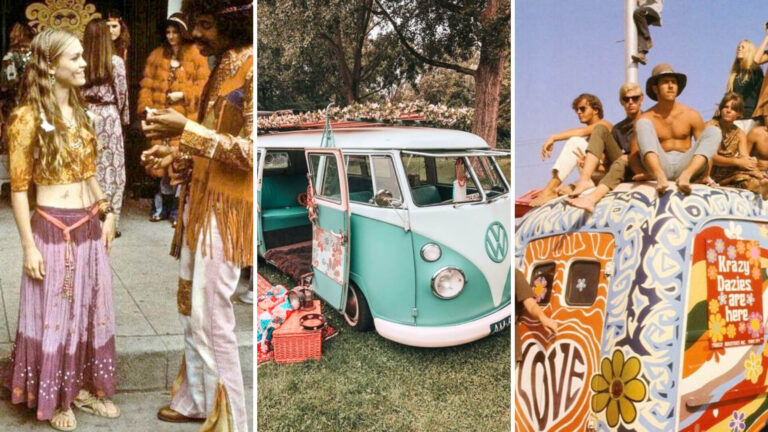
The rise of the Hippie Style in the 1960s was a significant cultural shift that greatly influenced bohemian fashion and had a lasting impact on society. As the 60s progressed, a counterculture movement emerged, challenging mainstream ideals and embracing a more bohemian and free-spirited lifestyle.
Hippie Style had a profound influence on fashion, with its emphasis on individuality, self-expression, and rejection of conventional norms. One of the key elements of this style was the use of tie-dye fabrics. This technique involved using vibrant dyes to create unique and colorful patterns on clothing, symbolizing the Hippie’s rejection of mass-produced garments.
Another iconic element of the Hippie Style was the popularity of bell-bottom jeans. These flared trousers were a symbol of rebellion against the conservative fashion norms of the time, and their wide-leg design was influenced by the aesthetics of the 60s counterculture.
Paisley prints also played a significant role in the Hippie movement. This intricate and swirling design was reminiscent of Eastern cultures and added a bold and psychedelic element to Hippie fashion. Paisley was often used in clothing, accessories, and even home decor, further emphasizing the embrace of non-traditional styles.
Iconic figures such as Twiggy and Veruschka fully embraced the Hippie Style, becoming influential fashion icons of the era. Their adoption of tie-dye fabrics, bell-bottom jeans, and paisley prints helped popularize and legitimize this new fashion trend.
The 60s Aesthetic in Media and Pop Culture
The 60s aesthetic in media and pop culture was driven by the changing social and cultural landscape of the era. It was a time of cultural shifts and a rebellion against traditional norms. In this vibrant and transformative period, fashion played a significant role in expressing the spirit of the times. The youth culture of the 60s sought to break free from conservative styles and embrace a more liberated and individualistic approach to fashion.
This desire for freedom and self-expression translated into bold and unconventional clothing choices that became iconic representations of the era. From the mini-skirt to psychedelic prints, the 60s aesthetic in media and pop culture reflected the energy and creativity of the time, leaving a lasting impact on fashion and popular culture.
Influence on Film and Television
The 60s aesthetic had a significant influence on film and television, shaping the visual and stylistic aspects of various productions. Iconic movies and television shows from this era captured the essence of the 60s aesthetic and showcased its influence on popular culture.
Movies such as “Breathless” (1960), “Bonnie and Clyde” (1967), and “Easy Rider” (1969) embodied the rebellious spirit and youth culture of the era. These films often featured characters donning bold patterns, futuristic designs, and modern clothing styles, reflecting the changing fashion industry and personal style of the time.
Television shows like “The Twilight Zone” (1959-1964) and “The Brady Bunch” (1969-1974) also incorporated elements of the 60s aesthetic. The set designs and costumes of these shows showcased the era’s vibrant and eclectic style, with bright colors, bold prints, and cultural shifts influencing the overall visual aesthetics.
Iconic characters like Mary Quant, Jackie Kennedy, and Jane Birkin became fashion icons, representing the 60s fashion trends and youth culture. Their bold fashion choices, from mini-skirts to bell-bottom jeans, became synonymous with the 60s aesthetic.
The 60s aesthetic in film and television created a lasting impact on popular culture, and its influence can still be seen today in the practice of fashion, set design, and overall visual aesthetics. By capturing the spirit of the era, these productions have become timeless examples of the iconic fashion and cultural shifts of the 1960s.
Influence on Music and Popular Culture
The 60s aesthetic had a profound impact on music and popular culture, shaping and defining a generation. Music icons like The Beatles played a crucial role in this cultural revolution, not only with their groundbreaking music but also with their distinctive sense of style. Their Mod style, characterized by tailored suits, Chelsea boots, and mop-top hairstyles, became a fashion trend that captured the spirit of the era.
The Beatles’ influence on fashion went beyond their own appearance. Their popularity and status as trendsetters inspired countless young people to adopt the Mod style, creating a ripple effect across the fashion industry. The Mod look became a symbol of youth rebellion and coolness, reflecting the changing social and cultural landscape of the 60s.
The impact of the 60s aesthetic extended beyond music and fashion. It permeated literature, visual arts, and social movements. Writers like Jack Kerouac and Allen Ginsberg embraced a countercultural spirit, using their works to challenge societal norms and inspire rebellion. Visual artists such as Andy Warhol brought the Pop Art movement to the forefront, utilizing bold colors and iconic imagery to reflect the spirit of the 60s.
Politically and socially, the 60s witnessed significant movements for civil rights, women’s liberation, and anti-war protests. The countercultural values of peace, love, and freedom were often expressed through the arts and served as rallying cries for change.
The 60s Style in Interior Design
The 60s aesthetic in interior design was characterized by a blend of two influential movements: the Space Age Aesthetic and the Pop Art movement. These two movements brought bold and dynamic elements into interior spaces, creating a vibrant and futuristic atmosphere.
The Space Age Aesthetic had a significant impact on interior design during the 60s. It embraced futuristic shapes, clean lines, and metallic finishes, reflecting the cultural fascination with space exploration and technological advancements. Furniture pieces often featured sleek forms and minimalist designs, inspired by the simplicity and efficiency of space travel.
At the same time, the Pop Art movement introduced bold colors, unique textures, and unconventional materials into interior spaces. Vibrant hues such as electric blue, hot pink, and acid green were popular choices, adding a playful and energetic vibe to rooms. These bold colors were often paired with contrasting or clashing combinations for maximum visual impact.
In terms of textures and materials, designers embraced unconventional choices. Plastic, fiberglass, and other innovative materials were incorporated into furniture and decor, adding a sense of modernity and forward-thinking. These unique textures and materials contributed to the futuristic aesthetic of the era.
Popular patterns from the 60s included psychedelic prints, geometric shapes, and abstract designs. These patterns were often characterized by vibrant colors and bold contrasts. Color palettes ranged from bold and bright combinations to more muted and earthy tones, providing a variety of options for expressing personal style.
The Future of 60s Aesthetic and Retro Fashion Beyond 2024
As we look beyond 2024, the future of 60s aesthetic and retro fashion holds an exciting promise of continued evolution and influence. The 60s aesthetic, with its bold patterns, futuristic designs, and vibrant colors, has already left an indelible mark on the fashion industry and continues to inspire designers today.
In the years to come, we can expect to see a fusion of the 60s aesthetic with modern designs. Designers may incorporate elements such as mini skirts and bell-bottom jeans, reimagining these iconic pieces with a contemporary twist. Additionally, the use of bold colors and psychedelic prints will continue to be popular choices, reflecting the enduring appeal of the youth culture and hippie style that came to define the 60s.
Influences from fashion icons of the era, such as Mary Quant, Jackie Kennedy, and Brigitte Bardot, will persist in shaping the future of retro fashion. Their timeless sense of style and iconic fashion statements will continue to inspire generations to come.
As retro fashion becomes more integrated into mainstream culture, we can anticipate a resurgence of 60s-inspired trends in the coming years. The conservative styles of the era, juxtaposed with the cool and youthful vibe of the 60s, will create a unique and eclectic fashion landscape.
The future of 60s aesthetic and retro fashion beyond 2024 holds endless possibilities. As contemporary designers and fashion enthusiasts continue to draw inspiration from the past, the 60s aesthetic will undoubtedly evolve while retaining its distinctive charm and cultural significance.
